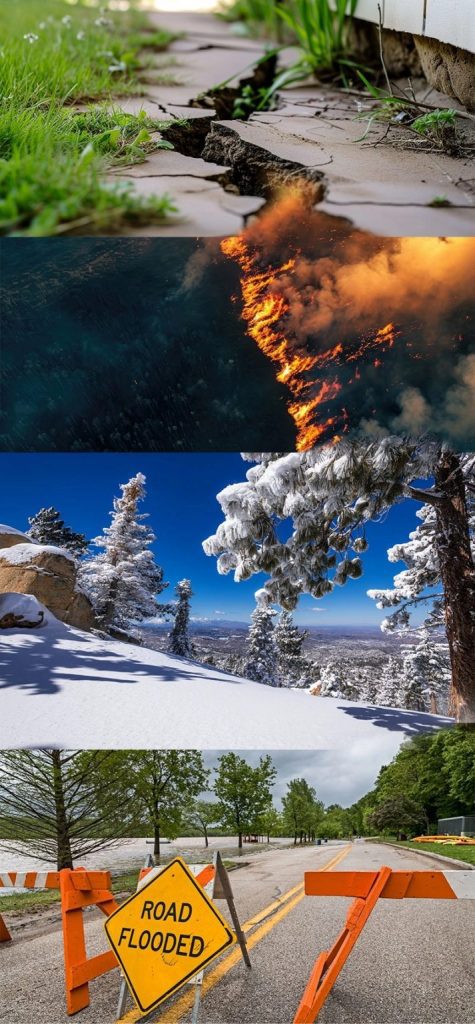Know your Hazards in San Bernardino County
Understanding the hazards that can affect San Bernardino County is a critical step in preparing for emergencies. This page provides information on the most common hazards in our area, how they can impact you, and what you can do to be prepared.
MyHazards
Enter your address and learn which hazards occur in your neighborhood and how to reduce your risk.
Types of Hazards in San Bernardino County
San Bernardino County is susceptible to a variety of natural and man-made hazards. Here are some of the top hazards in San Bernardino County:
Earthquakes
The County is located near several significant fault lines, making it prone to seismic activity that can cause severe shaking and structural damage.
Extreme Weather
The County may face extreme weather conditions. Winter storms in San Bernardino County typically involve heavy precipitation, including rain at lower elevations and snow in higher elevations such as the mountains.
Extreme Heat
High temperatures, especially during summer months, can pose serious health risks, particularly to vulnerable populations.
Public Safety Power Shutoffs (PSPS)
Public Safety Power Shutoffs (PSPS) are proactive measures by utility companies to prevent wildfires during extreme weather conditions like high winds and low humidity. Planned power outages can disrupt electricity-dependent services and infrastructure.
Flooding/Debris Flow
Heavy rains, particularly during winter storms, can lead to flooding in low-lying areas and along riverbanks.
Public Health/Pandemics
Pandemics pose significant hazards to San Bernardino County, impacting both public health and the community at large.
Wildfires
Dry conditions and Santa Ana winds contribute to the spread of wildfires, threatening homes, wildlife, and natural resources, especially in the foothills and mountain areas.
Monsoon Season
Monsoon season in San Bernardino County typically occurs from July to September and is characterized by intense thunderstorms with heavy rain, lightning, strong winds, and potential flash flooding. These storms can develop suddenly and pose significant risks to residents, especially those living in flood-prone areas or near steep terrain.
Be Prepared
Being aware of the hazards in San Bernardino County is the first step in being prepared. Here are some general tips to help you prepare:
- Stay Informed: Sign up for local emergency alerts and stay tuned to weather forecasts and news reports.
- Create an Emergency Plan: Develop a family emergency plan that includes communication strategies, evacuation routes, and meeting points.
- Build an Emergency Kit: Assemble a kit with essential supplies such as, but not limited to water, food, medications, flashlights, batteries, and important documents.
- Secure Your Property: Take steps to safeguard your home against potential hazards, such as installing storm shutters, securing heavy furniture, and maintaining defensible space around your property.
Stay informed, be prepared, and stay resilient in San Bernardino County!
Resources and Information:
